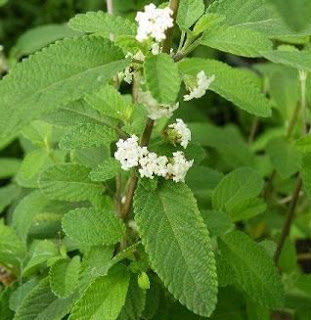Today, we dive into the captivating world of oregano, a flavorful and versatile herb that has charmed gardeners and chefs alike for centuries. With its enticing aroma and culinary prowess, oregano has secured its place as a must-have ingredient in kitchens around the globe.
In this blog post, I will introduce you to six
delightful varieties of oregano and provide you with all the essential details
on how to cultivate this herbaceous gem in your own garden. Let's embark on
this flavorful journey together!
Greek oregano, also known as wild marjoram, is a classic and widely recognized variety. It boasts a robust flavor and aroma, making it a staple in Mediterranean cuisine. Greek oregano thrives in full sun and well-drained soil, and it appreciates a slightly alkaline pH. This hardy variety is known for its ability to withstand heat, drought, and poor soil conditions, making it suitable for various gardening environments.
Italian Oregano (Origanum x majoricum):Renowned for its mild and sweet flavor, Italian oregano
is a popular choice among chefs and home cooks. It features larger leaves and a
milder aroma compared to Greek oregano. Italian oregano prefers full sun and
well-drained soil with a neutral to slightly alkaline pH. It grows well in
containers, herb gardens, or as a border plant, adding a touch of elegance to
your outdoor space.
Adding a touch of vibrant spice to your culinary
creations, Mexican oregano is not botanically related to the Mediterranean
varieties but shares a similar flavor profile. It offers a hint of citrus and
mild heat, making it a perfect complement to Mexican, Tex-Mex, and Latin
American dishes. Mexican oregano prefers full sun to partial shade and
well-drained soil. This variety is quite drought-tolerant and can withstand hot
and dry conditions.
Cuban oregano, also known as Spanish thyme or Mexican
mint, is a versatile herb with a distinctive flavor and aroma. While not a true
oregano, it is a member of the mint family. It features broad, succulent leaves
and an intense fragrance reminiscent of thyme and oregano. Cuban oregano
thrives in full sun or partial shade and well-drained soil. It is easy to grow
and can even be cultivated as a houseplant or in hanging baskets.
For a touch of visual delight in your herb garden,
consider golden oregano. This variety boasts striking golden-yellow foliage
that adds a pop of color to your landscape. Golden oregano prefers full sun to
partial shade and well-drained soil. It provides the same aromatic flavor as
other oregano varieties, making it an excellent choice for both culinary and
ornamental purposes.
Cultivation Tips
To successfully cultivate oregano, regardless of the
variety, here are some essential tips to keep in mind:
Location and Sunlight: Oregano thrives in full sun,
although some varieties tolerate partial shade. Select a well-drained spot in
your garden or use containers if space is limited.
Soil: Oregano prefers well-drained soil with a neutral
to slightly alkaline pH. Amend heavy or clay soil with organic matter to
improve drainage.
Watering: Oregano is drought-tolerant once
established. Water it deeply but infrequently, allowing the soil to dry out
between waterings. Avoid overwatering, as oregano is susceptible to root rot.
Pruning: Regular pruning helps maintain the shape and
vigor of oregano plants. Trim after flowering or during spring to encourage
bushier growth and prevent legginess.
Harvesting: Begin harvesting oregano leaves when the
plants are well-established. Harvest in the morning, after the dew has
evaporated but before the sun becomes too hot. Cut sprigs from the top of the
plant, leaving enough foliage for it to continue growing.
Remember, oregano thrives in well-drained soil, ample sunlight, and proper watering practices. With a little care and attention, you can cultivate this versatile herb in your own garden, allowing you to infuse your dishes with the vibrant essence of the Mediterranean, the Middle East, Mexico, or even your own unique blend.
So, whether you're crafting a Greek salad, preparing a
tantalizing pizza, or experimenting with fusion cuisine, let the diverse world
of oregano be your guide, and savor the delicious results!




.jpg)







.jpg)

.jpg)

.jpg)


.jpeg)
.jpeg)
.png)